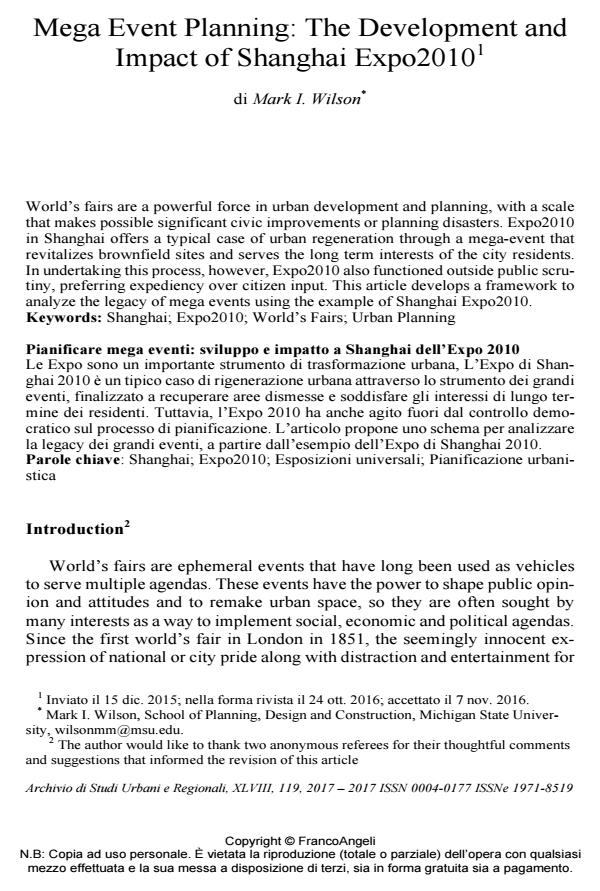Mega Event Planning: The Development and Impact of Shanghai Expo2010
Titolo Rivista ARCHIVIO DI STUDI URBANI E REGIONALI
Autori/Curatori Mark I. Wilson
Anno di pubblicazione 2017 Fascicolo 2017/119
Lingua Inglese Numero pagine 19 P. 139-157 Dimensione file 332 KB
DOI 10.3280/ASUR2017-119009
Il DOI è il codice a barre della proprietà intellettuale: per saperne di più
clicca qui
Qui sotto puoi vedere in anteprima la prima pagina di questo articolo.
Se questo articolo ti interessa, lo puoi acquistare (e scaricare in formato pdf) seguendo le facili indicazioni per acquistare il download credit. Acquista Download Credits per scaricare questo Articolo in formato PDF

FrancoAngeli è membro della Publishers International Linking Association, Inc (PILA)associazione indipendente e non profit per facilitare (attraverso i servizi tecnologici implementati da CrossRef.org) l’accesso degli studiosi ai contenuti digitali nelle pubblicazioni professionali e scientifiche
World’s fairs are a powerful force in urban development and planning, with a scale that makes possible significant civic improvements or planning disasters. Ex-po2010 in Shanghai offers a typical case of urban regeneration through a mega-event that revitalizes brownfield sites and serves the long term interests of the city residents. In undertaking this process, however, Expo2010 also functioned outside public scrutiny, preferring expediency over citizen input. This article develops a framework to analyze the legacy of mega events using the example of Shanghai Expo2010.
Le Expo sono un importante strumento di trasformazione urbana, L’Expo di Shanghai 2010 è un tipico caso di rigenerazione urbana attraverso lo strumento dei grandi eventi, finalizzato a recuperare aree dismesse e soddisfare gli interessi di lungo termine dei residenti. Tuttavia, l’Expo 2010 ha anche agito fuori dal controllo democratico sul processo di pianificazione. L’articolo propone uno schema per analizzare la legacy dei grandi eventi, a partire dall’esempio dell’Expo di Shanghai 2010.
Parole chiave:Shanghai; Expo2010; Esposizioni universali; Pianificazione urbanistica
Mark I. Wilson, Mega Event Planning: The Development and Impact of Shanghai Expo2010 in "ARCHIVIO DI STUDI URBANI E REGIONALI" 119/2017, pp 139-157, DOI: 10.3280/ASUR2017-119009